Hyundai i20 vs Mazda CX-30 – Which car suits you better?
Compare performance, boot capacity, efficiency and price at a glance.
Find out which car is the better choice for you – Hyundai i20 or Mazda CX-30?
Here’s where it gets real: The technical differences in detail
Costs and Efficiency: Price and efficiency are key factors when choosing a car – and this is often where the real differences emerge.
Hyundai i20 has a markedly advantage in terms of price – it starts at 17400 £, while the Mazda CX-30 costs 25200 £. That’s a price difference of around 7834 £.
Fuel consumption also shows a difference: the Hyundai i20 manages with 5.20 L and is therefore hardly any more efficient than the Mazda CX-30 with 5.70 L. The difference is about 0.50 L per 100 km.
Engine and Performance: Power, torque and acceleration say a lot about how a car feels on the road. This is where you see which model delivers more driving dynamics.
When it comes to engine power, the Mazda CX-30 has a markedly edge – offering 186 HP compared to 100 HP. That’s roughly 86 HP more horsepower.
In acceleration from 0 to 100 km/h, the Mazda CX-30 is visibly quicker – completing the sprint in 8.30 s, while the Hyundai i20 takes 11.10 s. That’s about 2.80 s faster.
In terms of top speed, the Mazda CX-30 performs slightly better – reaching 204 km/h, while the Hyundai i20 tops out at 183 km/h. The difference is around 21 km/h.
There’s also a difference in torque: the Mazda CX-30 pulls a touch stronger with 240 Nm compared to 200 Nm. That’s about 40 Nm difference.
Space and Everyday Use: Beyond pure performance, interior space and usability matter most in daily life. This is where you see which car is more practical and versatile.
Both vehicles offer seating for 5 people.
In curb weight, the Hyundai i20 is noticeably lighter – 1088 kg compared to 1455 kg. The difference is around 367 kg.
In terms of boot space, the Mazda CX-30 offers a touch more room – 430 L compared to 352 L. That’s a difference of about 78 L.
In maximum load capacity, the Mazda CX-30 performs a touch better – up to 1406 L, which is about 241 L more than the Hyundai i20.
When it comes to payload, Mazda CX-30 barely noticeable takes the win – 496 kg compared to 472 kg. That’s a difference of about 24 kg.
Our conclusion: The Mazda CX-30 proves to be is clearly superior and thus becomes our DriveDuel Champion!
Overall, Mazda CX-30 is the better all-rounder in this comparison.
Hyundai i20
The Hyundai i20 impresses with its sleek design and modern aesthetics, making it a stylish choice in the compact car segment. Its interior is thoughtfully designed, offering comfort and advanced technology for a pleasurable driving experience. The vehicle also stands out with its efficient performance and agile handling, making city driving a breeze.
details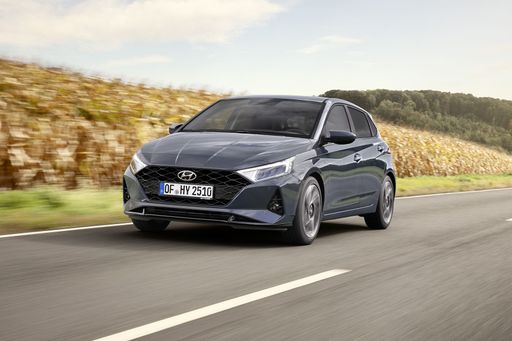 @ hyundai.news
@ hyundai.news
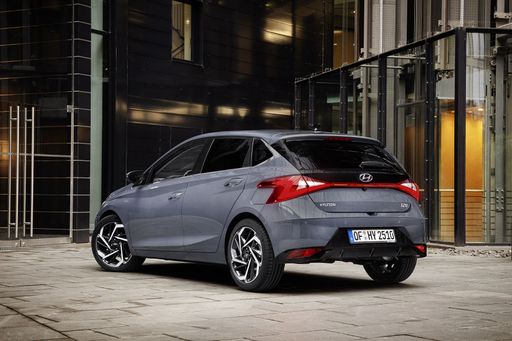 @ hyundai.news
@ hyundai.news
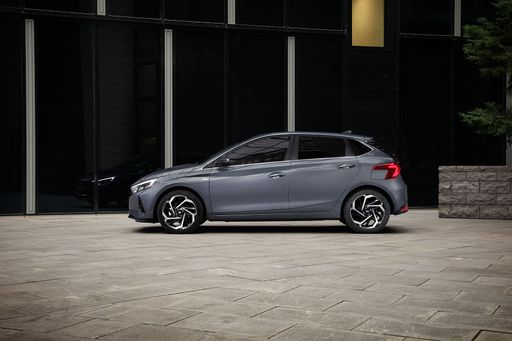 @ hyundai.news
@ hyundai.news
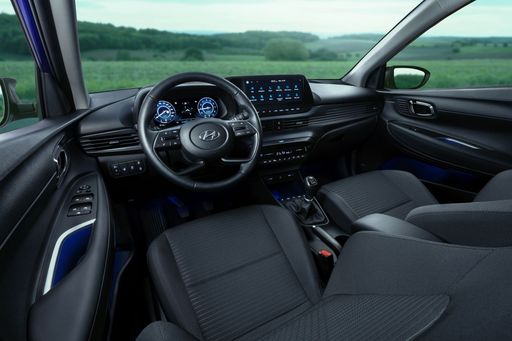 @ hyundai.news
@ hyundai.news
 @ hyundai.news
@ hyundai.news
Mazda CX-30
The Mazda CX-30 effortlessly combines sleek design with a sense of adventure, making it an appealing choice for urban explorers and countryside enthusiasts alike. Inside, the cabin is thoughtfully designed, offering both comfort and cutting-edge technology to enhance the driving experience. Its performance on the road is agile, providing a smooth and engaging journey for drivers and passengers.
details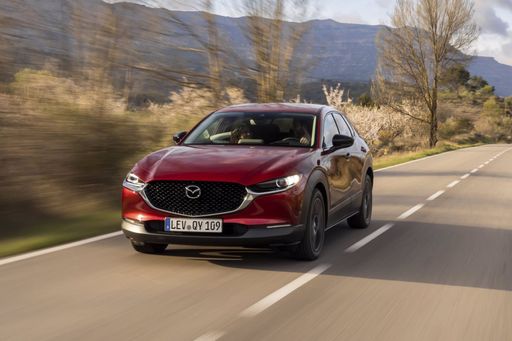 @ de.mazda-press.com
@ de.mazda-press.com
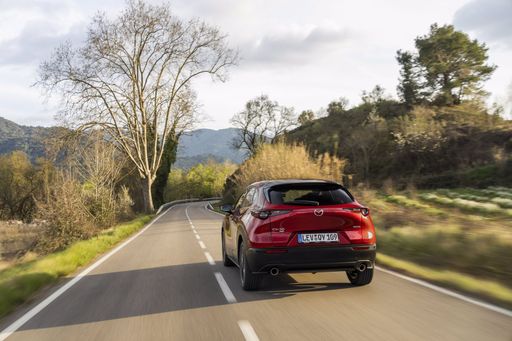 @ de.mazda-press.com
@ de.mazda-press.com
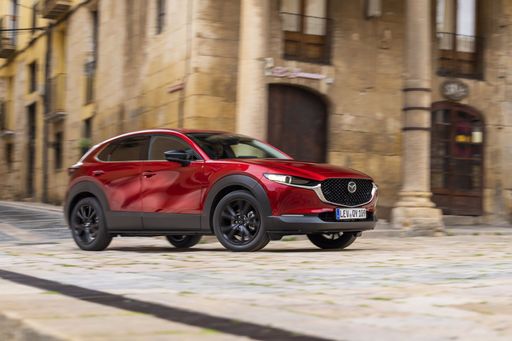 @ de.mazda-press.com
@ de.mazda-press.com
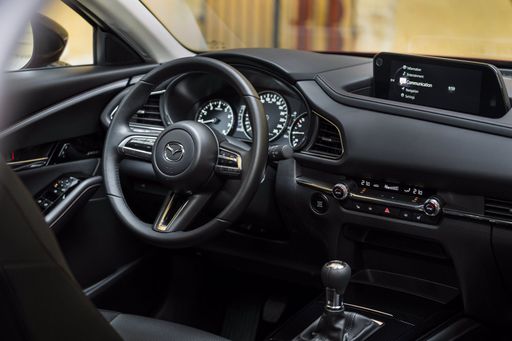 @ de.mazda-press.com
@ de.mazda-press.com

|

|
|
|
|
Costs and Consumption |
|
|---|---|
|
Price
17400 - 24000 £
|
Price
25200 - 36800 £
|
|
Consumption L/100km
5.2 - 5.3 L
|
Consumption L/100km
5.7 - 6.6 L
|
|
Consumption kWh/100km
-
|
Consumption kWh/100km
-
|
|
Electric Range
-
|
Electric Range
-
|
|
Battery Capacity
-
|
Battery Capacity
-
|
|
co2
119 - 121 g/km
|
co2
129 - 148 g/km
|
|
Fuel tank capacity
40 L
|
Fuel tank capacity
48 - 51 L
|
Dimensions and Body |
|
|---|---|
|
Body Type
Hatchback
|
Body Type
SUV
|
|
Seats
5
|
Seats
5
|
|
Doors
5
|
Doors
5
|
|
Curb weight
1088 - 1190 kg
|
Curb weight
1455 - 1587 kg
|
|
Trunk capacity
352 L
|
Trunk capacity
422 - 430 L
|
|
Length
4065 - 4075 mm
|
Length
4395 mm
|
|
Width
1775 mm
|
Width
1795 mm
|
|
Height
1450 - 1455 mm
|
Height
1540 mm
|
|
Max trunk capacity
1165 L
|
Max trunk capacity
1398 - 1406 L
|
|
Payload
450 - 472 kg
|
Payload
458 - 496 kg
|
Engine and Performance |
|
|---|---|
|
Engine Type
Petrol
|
Engine Type
Petrol MHEV
|
|
Transmission
Automatic, Manuel
|
Transmission
Manuel, Automatic
|
|
Transmission Detail
Dual-Clutch Automatic, Manual Gearbox
|
Transmission Detail
Manual Gearbox, Automatic Gearbox
|
|
Drive Type
Front-Wheel Drive
|
Drive Type
Front-Wheel Drive, All-Wheel Drive
|
|
Power HP
79 - 100 HP
|
Power HP
140 - 186 HP
|
|
Acceleration 0-100km/h
11.1 - 13.7 s
|
Acceleration 0-100km/h
8.3 - 10.3 s
|
|
Max Speed
166 - 183 km/h
|
Max Speed
191 - 204 km/h
|
|
Torque
113 - 200 Nm
|
Torque
238 - 240 Nm
|
|
Number of Cylinders
3 - 4
|
Number of Cylinders
4
|
|
Power kW
58 - 74 kW
|
Power kW
103 - 137 kW
|
|
Engine capacity
998 - 1197 cm3
|
Engine capacity
1998 - 2488 cm3
|
General |
|
|---|---|
|
Model Year
2024
|
Model Year
2025
|
|
CO2 Efficiency Class
D
|
CO2 Efficiency Class
D, E
|
|
Brand
Hyundai
|
Brand
Mazda
|
What drivetrain options does the Hyundai i20 have?
The Hyundai i20 is offered with Front-Wheel Drive.
The prices and data displayed are estimates based on German list prices and may vary by country. This information is not legally binding.
